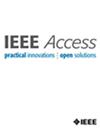基于人类需求响应的城市交通效率的公共交通出行建模目的
IF 3.4
3区 计算机科学
Q2 COMPUTER SCIENCE, INFORMATION SYSTEMS
引用次数: 0
摘要
公共交通系统是城市居民获取满足其日常需求的重要资源的动脉系统。因此,提高公交系统的运行效率对改善城市交通和城市可持续发展至关重要。然而,目前的公交系统运营并没有考虑到运营决策对乘客多样化需求满足的影响,没有响应驱动公交乘客出行行为的根本人类需求。为了解决这一限制,必须对PT旅行的目的进行建模和推断,以了解这些旅行旨在满足的人类需求的类型。因此,本文提出了一种基于贝叶斯概率的站级、逐时PT行程目的建模和推理方法。该方法集成了用于空间出行目的分布建模的重力模型和用于时间出行目的分布建模的时间变化模型,实现了站级、小时级PT出行目的建模和推理。通过将模拟的PT出行目的分布与已建立的流动性调查结果进行比较,验证了该方法的有效性。验证结果显示,两类分布具有较强的一致性,Kullback-Leibler散度评分为0.061,Jensen-Shannon散度评分为0.014。在验证的基础上,本文进一步实施并演示了所提出的方法,用于建模和分析纽约市COVID-19大流行期间PT出行目的的变化。时空分析揭示了旅行目的跨越时间和空间的不同模式。本文章由计算机程序翻译,如有差异,请以英文原文为准。
Modeling Purposes of Public Transportation Trips for Human Need-Responsive Urban Mobility Efficiency
Public transportation (PT) systems are the artery systems for urban residents to access resources essential for fulfilling their daily needs. Enhancing the operational efficiency of PT systems is thus of critical importance in urban mobility improvement and sustainable city development. However, current PT system operations do not account for the impact of operation decisions on the satisfaction of diverse needs of riders, irresponsive to the fundamental human needs driving mobility behaviors of PT riders. To address this limitation, it is imperative to model and infer the purposes of PT trips to understand the types of human needs that these trips aim to satisfy. As such, this paper presents a Bayesian probabilistic method for station-level, hourly PT trip purpose modeling and inference. The proposed method integrates 1) the gravity model for modeling spatial trip purpose distributions and 2) a temporal variation model for modeling temporal trip purpose distributions to enable station-level, hourly PT trip purpose modeling and inference. The method was validated by comparing the modeled PT trip purpose distributions to those obtained from established mobility surveys. The validation results showed a strong alignment of the two types of distributions, with a Kullback-Leibler divergence score of 0.061 and a Jensen-Shannon divergence score of 0.014. Building upon the validation, this paper further implemented and demonstrated the proposed method in modeling and analyzing shifts in PT trip purposes during the COVID-19 pandemic in New York City. Temporal-spatial analysis revealed distinct patterns in the trip purpose shifts across time and space.
求助全文
通过发布文献求助,成功后即可免费获取论文全文。
去求助
来源期刊

IEEE Access
COMPUTER SCIENCE, INFORMATION SYSTEMSENGIN-ENGINEERING, ELECTRICAL & ELECTRONIC
CiteScore
9.80
自引率
7.70%
发文量
6673
审稿时长
6 weeks
期刊介绍:
IEEE Access® is a multidisciplinary, open access (OA), applications-oriented, all-electronic archival journal that continuously presents the results of original research or development across all of IEEE''s fields of interest.
IEEE Access will publish articles that are of high interest to readers, original, technically correct, and clearly presented. Supported by author publication charges (APC), its hallmarks are a rapid peer review and publication process with open access to all readers. Unlike IEEE''s traditional Transactions or Journals, reviews are "binary", in that reviewers will either Accept or Reject an article in the form it is submitted in order to achieve rapid turnaround. Especially encouraged are submissions on:
Multidisciplinary topics, or applications-oriented articles and negative results that do not fit within the scope of IEEE''s traditional journals.
Practical articles discussing new experiments or measurement techniques, interesting solutions to engineering.
Development of new or improved fabrication or manufacturing techniques.
Reviews or survey articles of new or evolving fields oriented to assist others in understanding the new area.
 求助内容:
求助内容: 应助结果提醒方式:
应助结果提醒方式:


